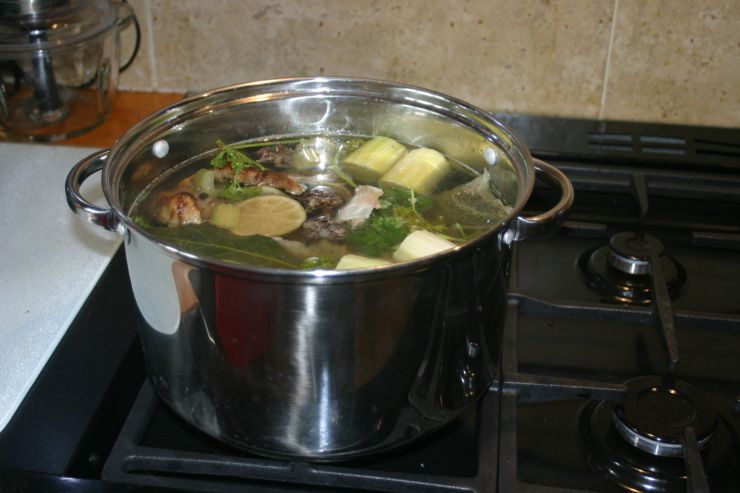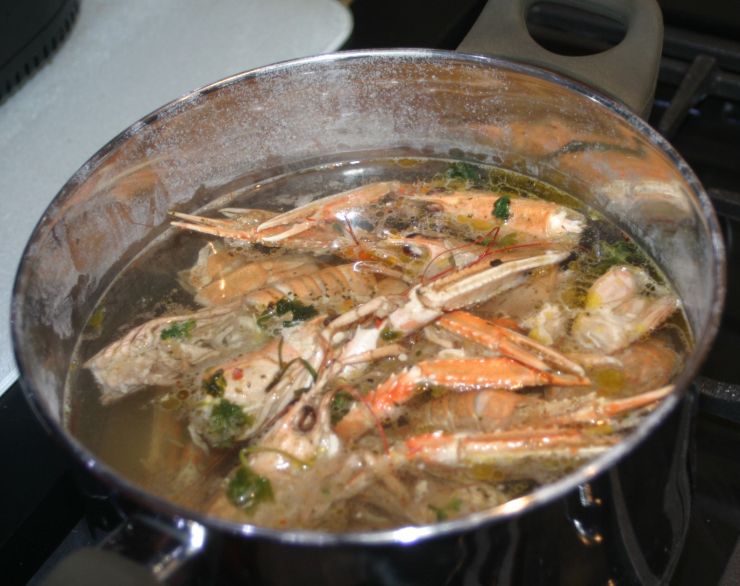- Home
- Cooking
- Roasting
- Frying
- Stir Frying
- Braising
- Steaming
- Baking
- Marinating
- Grilling
- Candy Making
- Deep-Frying
- En Papillote
- Curing
- Glaze
- Skewers and Kebabs
- Infusion
- Juicing
- Gravies and Sauces
- Making Pasta
- Outdoor Cooking
- Poaching
- Reduction
- Sautéing
- Soups and Broths
- Preserving Methods
- Fondue Methods
- Pané Methods
- Making Stocks
- Making Bread
- Griddling Methods
- Savoury Bakes
- Stews
- Making Salads
- About Cooking Crashes
- My Man's Cooking
- Patés and Terrines
- Roasting Meat
- Gardening
- Recipes
- Cakes and Bakes
- Fish
- Desserts
- Soups
- Stir Fry
- Meat
- Starters
- Snacks
- Smoothies
- Brunch
- Savoury Pies
- Vegetarian
- Salads
- Pasta
- Rice Dishes
- Picnic
- Stews
- Jams and Chutneys
- Burgers and Meatballs, Vegballs and Fishballs.
- Festive Recipes
- Sides
- Breakfast
- Pizza and Tartiflette
- Lunch
- BBQ and Grill
- Savoury Bakes and Gratins.
- Fondues
- Raclettes
- Leftover Recipes
- Sauces, Vinaigrettes, Dressings and Dips
- My Recipes
- Seasonal
- Tips
- Ingredients
- Cheese
- Fruits
- Vegetables
- Meat
- Fish
- Eggs
- Breads and Bakes
- Spices
- Herbs
- Sauces, Pastes and Stocks.
- Nuts
- Dairy
- Condiment
- Seaweeds
- Baking Ingredients
- Seeds
- Pastas and Noodles
- Pastries and Batters
- Shellfish and Seafood
- Oils, Vinegars and Cooking Fats
- Leaves
- Preserved Food
- Snacks
- Stuffing and Mincemeat
- Edible Succulents
- Edible Flowers
- Tofu
- The Unusual Delicacies.
- Honey
- Rice
- Sommelier
- Pets
- Wildlife
- News
- Reviews
- About
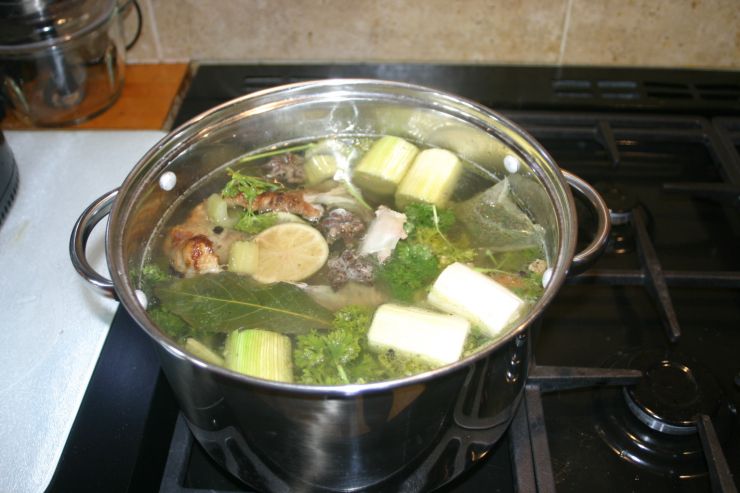
Stocks are a great way to impart a lots of flavour to a Soup, a Stew or a Sauce. They are not hard to do. Call me a Grand Ma if you wish, although I am not one, but I love simmering mine for ages and will not even think to use a pressure cooker to do one. No, I prefer to see the gentle bubbles, to have the lovely scent invading the kitchen, to write another chapter of one of my novels while the stock is doing its subtle thing and reducing down to something that will elevate my next dish.
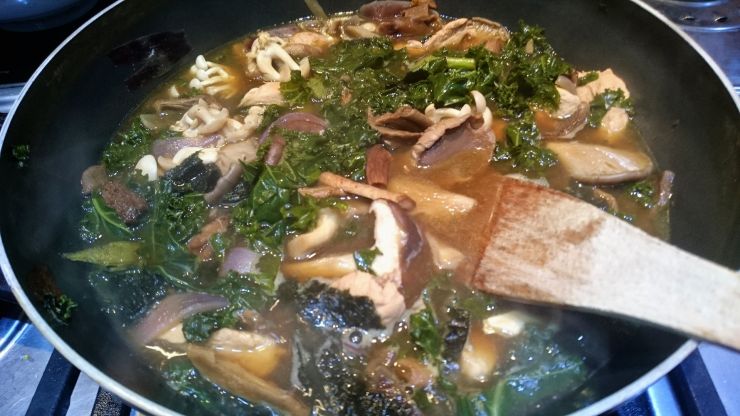
Building up flavours in a Stock, simmer gently.
Confession for confession, I am not very well and struggled with my health for a while. I have to manage how I can eat a fullfilling meal despite being mobility challenged and having trouble to eat and swallow. I will not say that the answer is Stock but I will just say it does help in some ways.
If you are reduced to have cup a soup because you can not stand more than five minutes some days, on a good day do yourself the favour of doing a real good stock. It is difficult when you are partly disabled. When your own body can give way and you just fall on the floor. But you have to find ways to keep going. So you need to feed your body and a good Soup made with a decent Stock can provide a bit of energy, a bit of taste, a bit of being able to move if just for a few minutes: The ability to continue...
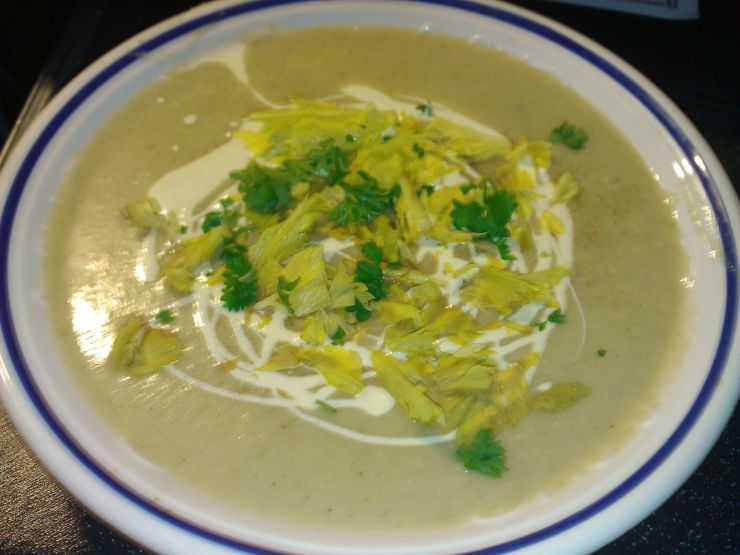
A Celery Soup jazzed up. It dosen't tell you I am unwell it sings to you 'Hello Dolly, you looking fine dolly' à la Armstrong.
First, your stock is your stock: there is no rule apart your own one. Dictature does not apply here. You are free to create your stock. You choose the ingredients you put within it. Make it your own. And you can change your own recipe at anytime, you are free! There is no boundaries apart the ones that you set to yourself.
Second, it is a good idea to make stocks of your stock. There I am speaking because I am not well physically. So making jars of nutritious food I can eat and swallow helps when I can do so. Make sure you label every jar correctly, content and dates. Those jars of Stock can help you to have a delicious meal because they are gold nuggets of tasty dishes to come in the future. Your fridge or freezer is your emergency Fort Knox.
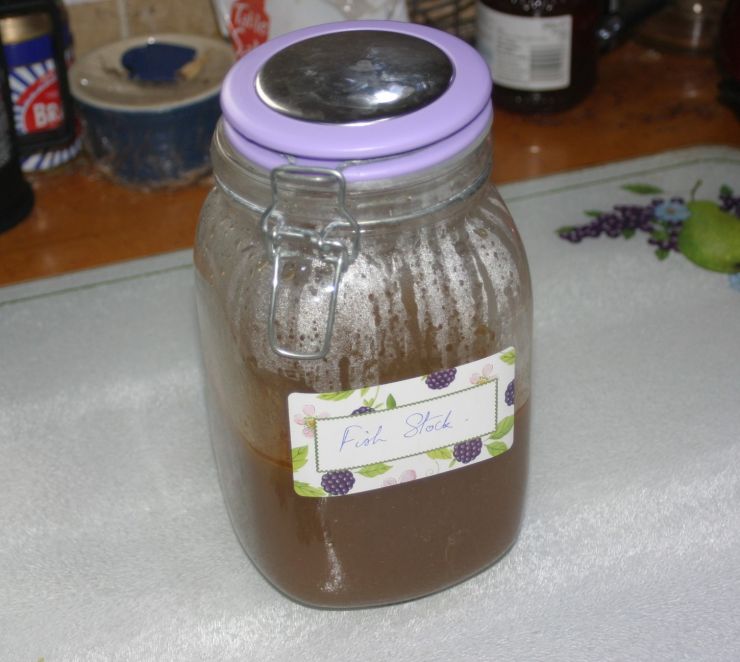
Keeping Stock jarred up for later. It is easy to make more than less with stock but don't waste it, keep it!
Third, Stocks are versatile and a good way to use what you have at hand or to use what you have left over. A decent Sunday roast chicken can be transformed into a Stock with all its bones and rest of meat. You are of course the judge of whatever you want to eat. Religion, Allergy, Pescaterian, Vegetarian, Vegan, you are the king of what goes into your palate: you choose.
The start in my opinion is the Water. Make sure it submerge the ingredients you are using. I have no real rule of thumb on that one but if I deal with meat bones or lets just say the carcasse of an entire Chicken, it will be entirely covered with water from the beginning. So I use my largest cooking pot, my (which has been dubbed by my partner) 'the Cauldron' to create my Magic Concoction which is simply in my view called a good flavoursome Stock to use for later. It will simmer, gently and slowy on the lowest heat of the smallest hob I have, for ages. So there is no danger that you will have a spill over. But one tip is, to let it be, just like the song of the Beatles, 'Let it be, Let it be, Let it be, Let it be, Whisper words of Wisdom...' so simmer as gently as you can to have a Simmering World of Flavour in your Cookingdom... Well your 'Cauldron.'
https://www.youtube.com/watch?v=HzvDofigTK
Give or take, I usually have about five centimetres between the rim and the covered carcasse or meat of one sort or another. Then comes the other part and another song after the water, the fire... The Doors, Jim Morrisson, come on Baby light my fire. As I will repeat gently does it: Low heat, Take Time. Another tip, you do not need in that way to cover your cooking pot because then your Stock will stay put and not spill over everywhere. No lid required just attention, care and a bit of love for it to gather flavour. We could resume it as a bit of TLC.
This is when you can take your time, when the other ingredients are coming in and I will say some chopping action. In culinary circles, you have what is called the Trinity, the veg Trinity. It is not Holy: It is not set in rules that can defy life or gravity laws upon Earth. It does change with every human and areas of the world. As a human with a small voice, putting my hands up in the air, who has not the infuse science of it all, my trinity is usually: Carrots, Celery, and Leeks.
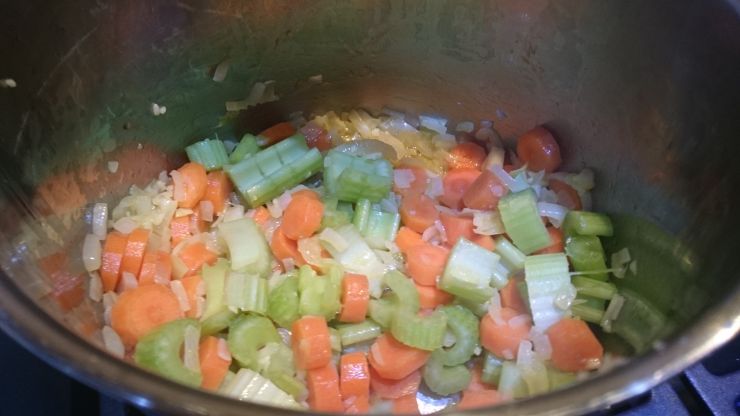
A Trinity: it is usually a trio of vegetables used as a base. It varies from families, to areas, to states but it is usually a good starting point for any Stock.
As for the chopping action, I will not go Bruce Lee or Bruce Willis or Dirty Harry on the veg. It is a going to the pot chopped roughly to give it flavour. Get the job done. However, from tendencies or habits, I can tell you that those essential Veg for me are cut at about 2 to 4 cm in length. Make sure to wash them clean off before putting them in the pot: No speck of soil or insects around to be seen.
For my choices of veg, Carrots are essential for the health of your bones. They give calcium, vitamins K and A. Celery helps your antioxidants in your body, it also helps digestion, and reduces inflamation. As for Leeks, they will help your immune system. But I am not a Doctor, so do rely on a Doctor to make yourself better. Eating is the fuel for your body to keep going.
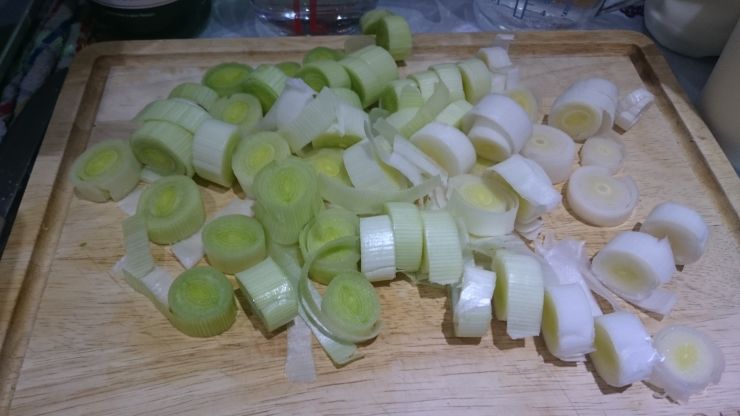
Chopped Leeks.
The Aim of the game here is to impart flavour to your Stock. Therefore Spices and Herbs comes into the mix. A pinch of black Peppercorn, Some Sea Salt (I tend to put one to two table spoons, heeped or not heeped), this already gives a little seasoning. Two to three Garlic Cloves, crushed, but I do bother to peel them. However you can add more upon your taste or the result for your dish. You can also try different kind of garlic, like black garlic (it does go well with a strong fish stock of meaty fish like Monkfish or Turbot) or smoked garlic (which marries well with, pork, ham or gammon but even on small quantity venison).
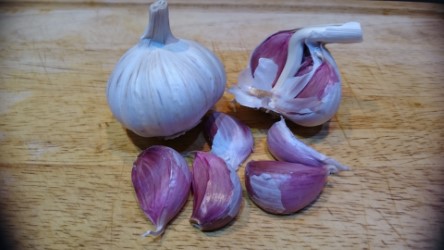
Garlic is one powerful ingredient to impart flavours to a Stock.
The Onion flavour does give a lovely subbtle kick to the Stock. There I will say again Bob is your uncle... I prefer leeks roughly chopped up. The entire veg goes in, the green and the white. The only left over is the little roots bit which I cut off and is not allowed in the stock. I tend to use normal leeks for meat or veg Stocks. However if I go for a fish or more refine stock I prefer using the miniature leeks. Then I do also chop them more thinely.
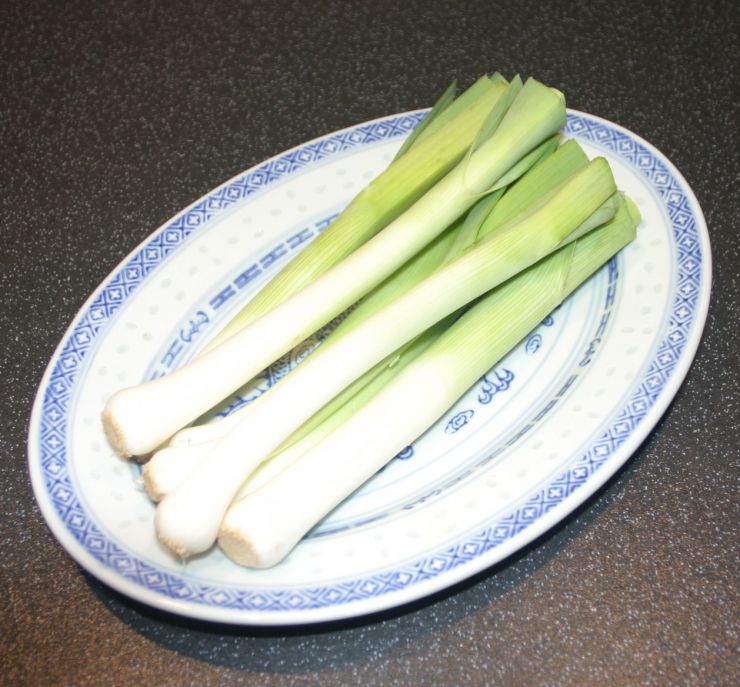
Baby Leeks suit Asian Stocks and Fish ones very well in my opinion.
To impart Onion taste to your Stock, there are very many choices: A large onion, quartered or not, white or red will do. My tendence to use red is more or less when I will prepare something inspired by the Meditaeranean dishes. As for a good old white Onion spiked with cloves, the norm is three cloves for half an Onion and six for an entire one. It infuses a delicious taste to the Stock you are preparing. This method works well with sauce, and milk base sauces as well.
Shallots however better used fried, sautéed and/or roasted can work very well with Stocks for venison, delicate wild birds, or a savoury veg stock for delicious mushroom soups, tomato soups or even asparagus soup. Make sure you peel them first. A little quail breasts and legs little broth with shallots and mushroom is an automnal dish delight.
Speaking of Onions, we must mention Spring Onions also (Scallions). The same goes for them either white or red, big or small. They will bring bags of flavours to a Stock. There I will say the subbtle Asian way with a clear Stock which could do with a right treat with slices of Spring Onions is a must. You can do it in so many way.
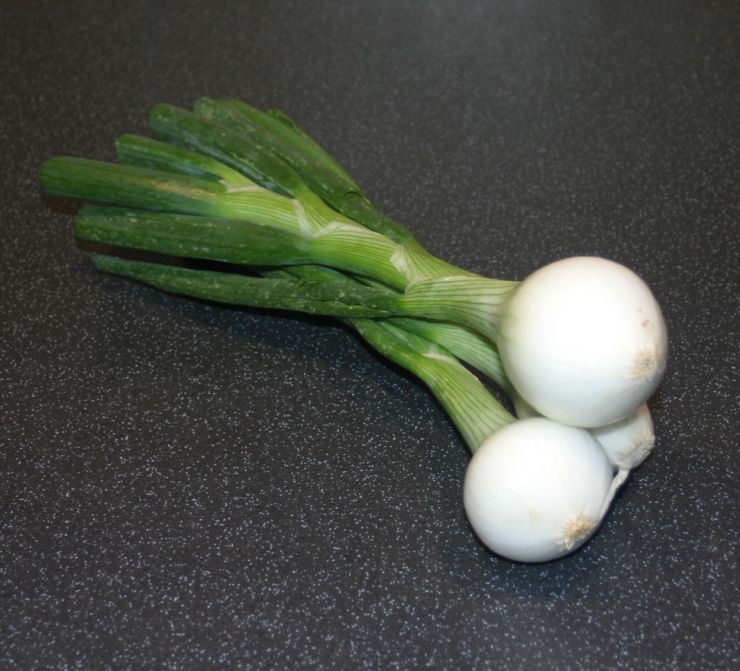
Large Spring Onions. For any Spring Onions, you can chop the green tail to add it to your Stock.
What I am thinking about is some sort of Dashi. The use of Shitake Mushrooms, Kombu (edible Kelp), a tea spoon or two of fish paste, Nori sheets could also work. If you want a bit of heat you can had an whole dried or freshi chilli or sliced ginger. Miso will also add another level to your stock.
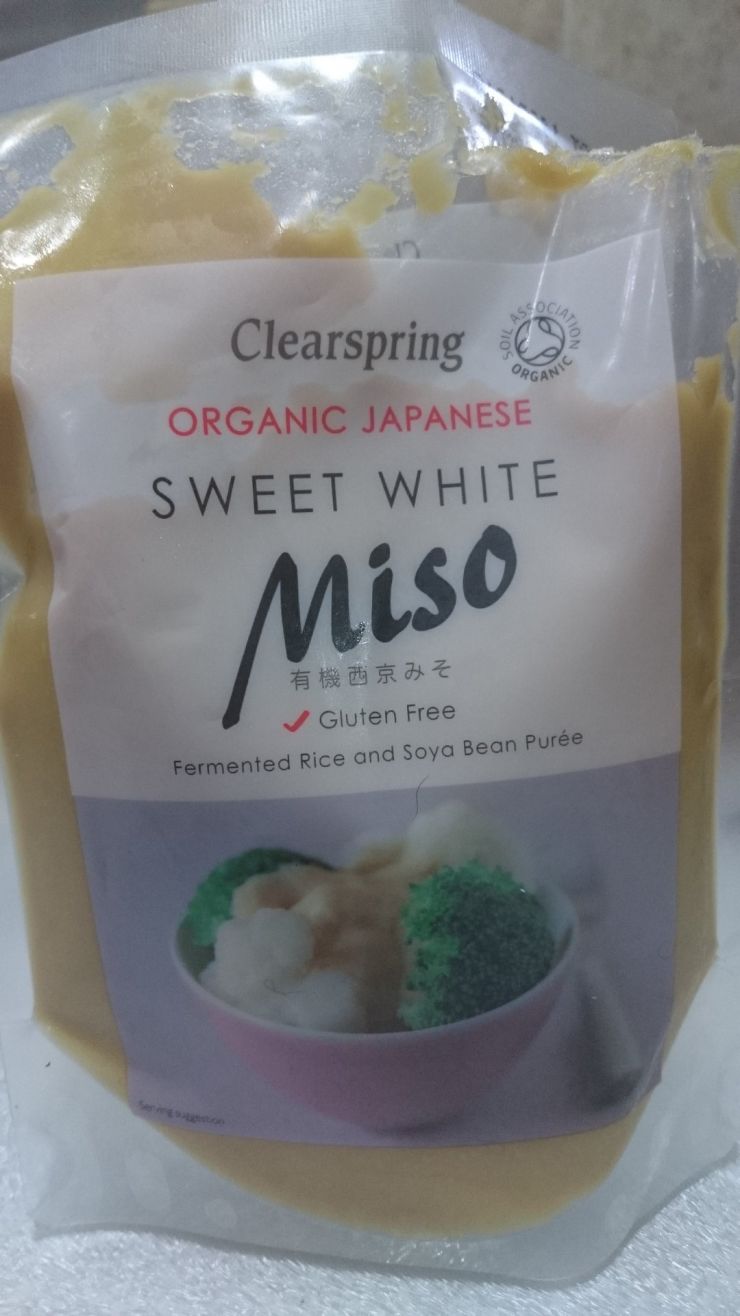
Miso, an excellent addition to Stocks.
Anyway you do your Stock for what it must sing of: which is I am hearty and I will warm you throughought, your belly and heart everytime...
Keep a lovely Stock made, used or saved for later: A Fort Knox to make you feel warm hearted better for a while.
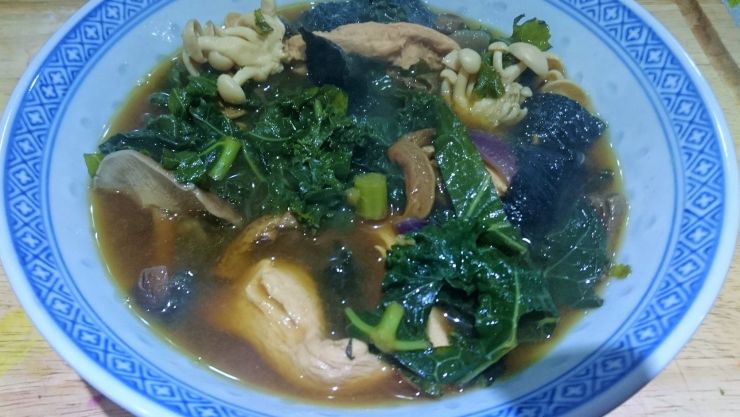
A Stock makes an hearty soup or broth.

